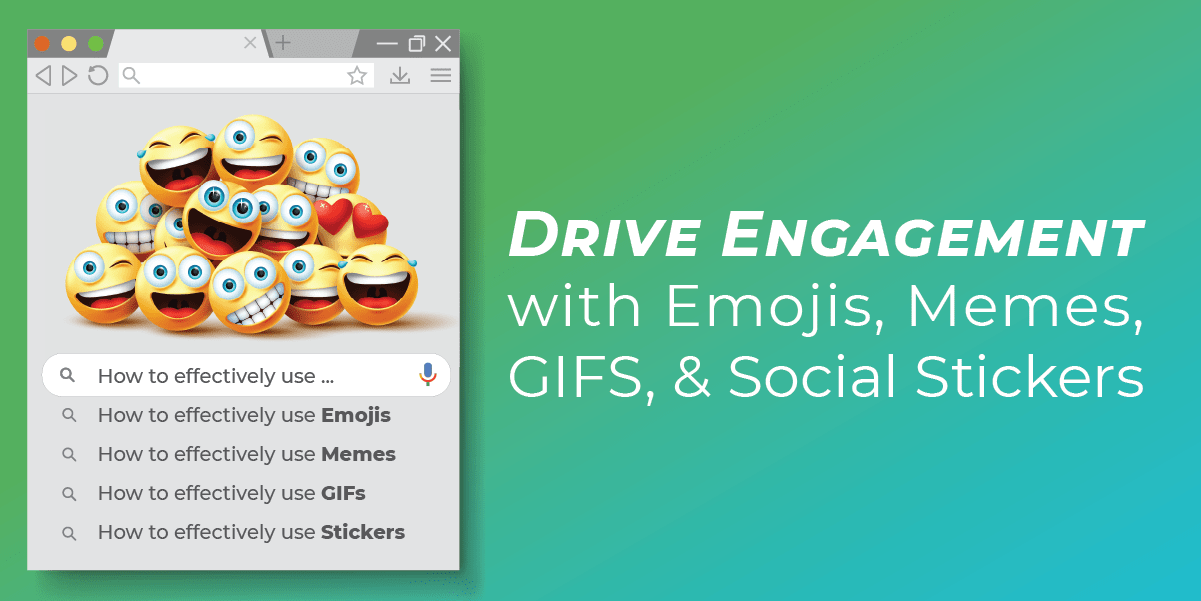Emojis, memes, GIFs, and stickers have become a staple in the 21st century. You can boost engagement and authentically connect with your audience when you use these modern communication tools.
Consumers who perceive your brand as human are not only twice as likely to love the brand but twice as likely to be satisfied by it. Similarly, consumers who perceive a brand as human are 1.6 times more likely to purchase from that brand and 1.8 times more likely to recommend it.
When brands implement emojis, memes, GIFs, and stickers, they appear more personable and less sales-driven, resulting in higher engagement and sales across more extended periods. 😍💰
For influencer marketing companies, these sales tools can take a brand to a higher level.
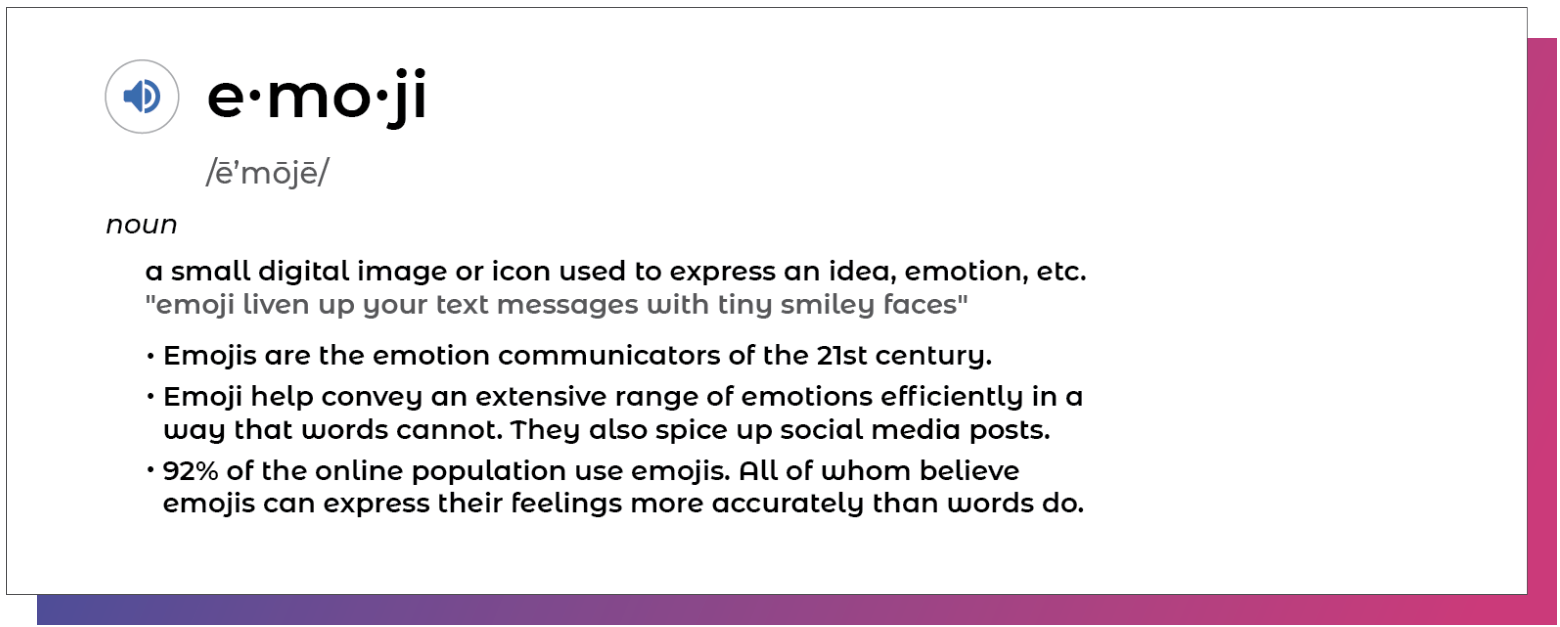
How can brands use emojis?
Captions 👏
According to a study by WordStream,
- 25.4% of tweets with emojis get better engagement
- 57% of Facebook posts get more likes while 33% get shares and comments if they have emojis in them
- Emojis increase Instagram engagement rate by 48%
Subjects of Emails
- A study where researchers analyzed 9,400 mobile marketing campaigns showed that by adding emojis to subject lines, open rates grew by 1,071% on Android and 662% on IOS in 2019.
Campaign Examples
Celebrate World Emoji Day like Sephora did…
#WorldEmojiDay cake pops have us like 😛🍰 Tell us your all-time fave emoji! Ours are 💅🏻💄 obvs. pic.twitter.com/7yHIz2p90x
— Sephora (@Sephora) July 17, 2016
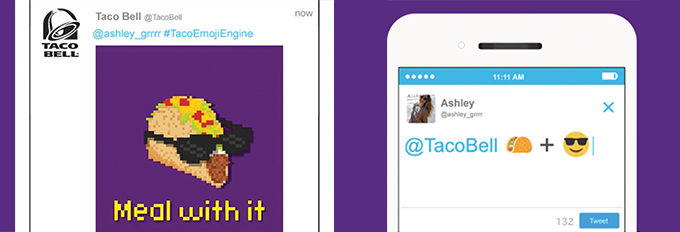 Taco Bell saw an opportunity when the taco emoji was released last year and created an entire campaign around the exciting news. One part of the campaign included tweeting them two different emojis, and an animated GIF would return translating what the two emojis combined meant using the hashtag. #TacoEmojiEngine
Taco Bell saw an opportunity when the taco emoji was released last year and created an entire campaign around the exciting news. One part of the campaign included tweeting them two different emojis, and an animated GIF would return translating what the two emojis combined meant using the hashtag. #TacoEmojiEngine
How should brands NOT use emojis?
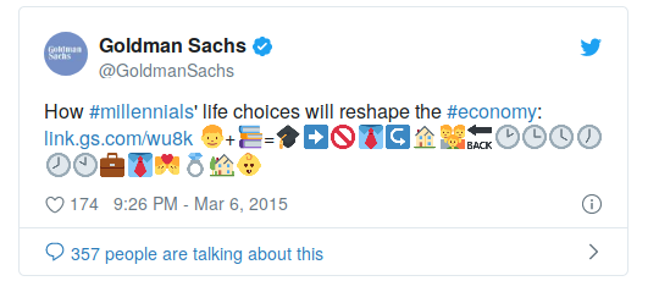
Do not overuse them or make them too difficult to understand right away.
Decoding may sound like a fun idea, but it’s too time-consuming for most users who scroll and skim.
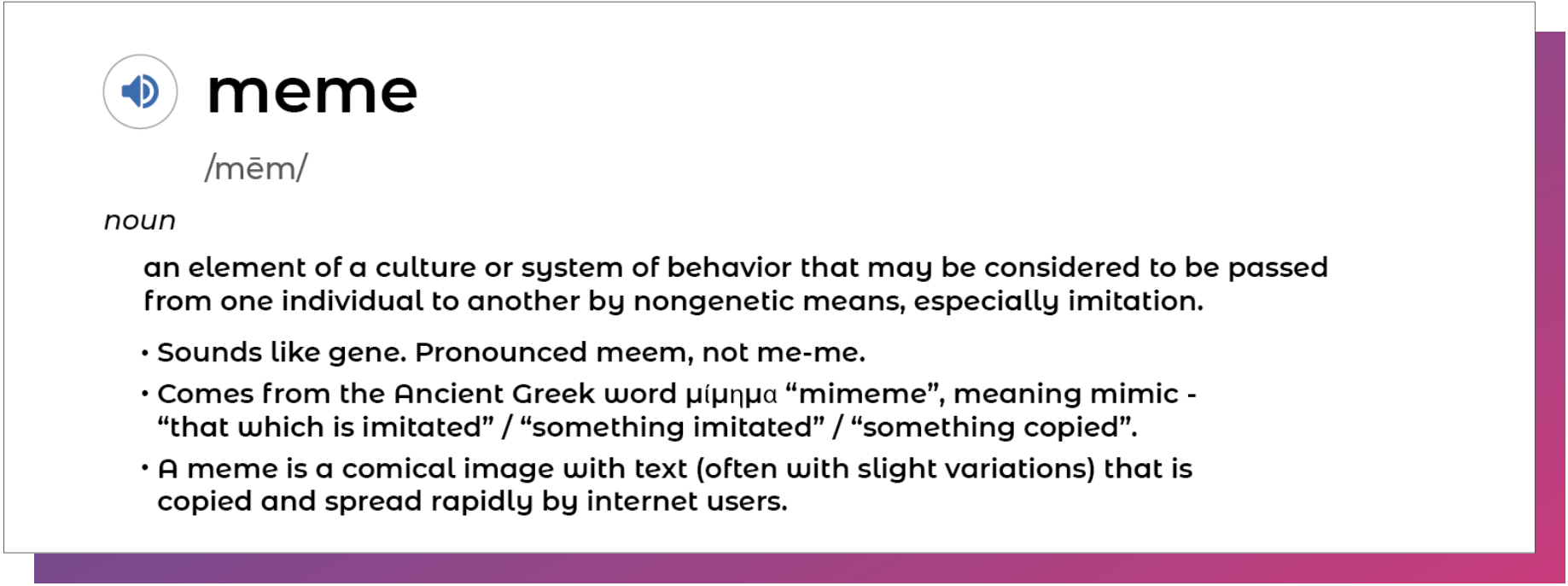
How can brands use memes?
A meme can shake up marketing. Gucci is a great example of how a brand can go beyond just throwing a funny caption on an over-used meme. Gucci is a famous fashion influencer marketing behemoth known for creating on-brand, original memes.

Campaign Examples
Memes are so popular because they are made to be shared. Barkbox created shareable posts, all the while showing off the brand’s more humorous and quirky side.
$25 for something $25 for something
for me for my dog pic.twitter.com/zQu7U4C9Ut— BarkBox (@barkbox) September 20, 2019
Can a brand go wrong with posting a meme?
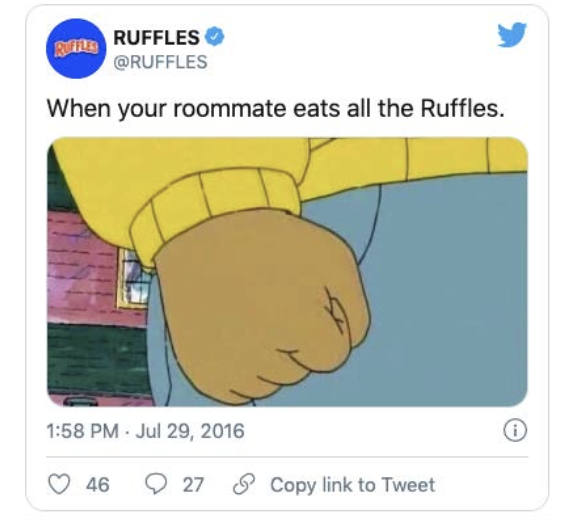
Yes. And here’s an example…
Ruffles didn’t spend too much thought behind this meme and it shows with how little engagement it got.
Why is this a bad example? Only people who watched the 90’s PBS show “Arthur” would ‘GET IT.’
When posting a meme, think: who is the audience, and is it relevant to them?
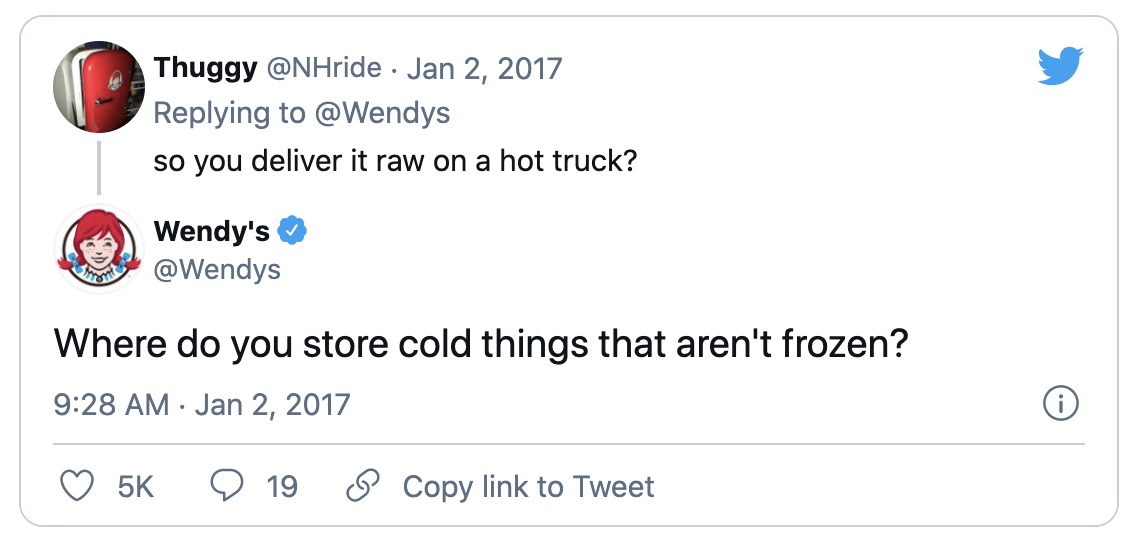 Wendy’s got into a little bit of a tweet battle with customers over whether they really use fresh beef or not. No big deal at first, but it escalated fast when Wendy’s responded with a meme.
Wendy’s got into a little bit of a tweet battle with customers over whether they really use fresh beef or not. No big deal at first, but it escalated fast when Wendy’s responded with a meme.
Memes can be a great way to break the tension, except in this case.
Wendy’s posted the “Pepe the frog” meme, which white supremacists used in the U.S. presidential election in 2016. Pepe the Frog is still currently claimed as a symbol of white supremacy.
The images were quickly removed, but not before users took screenshots.
Lesson learned: Make sure you do your research and understand what you’re posting, in case it’s tasteless or insensitive.

How do I pronounce GIF?
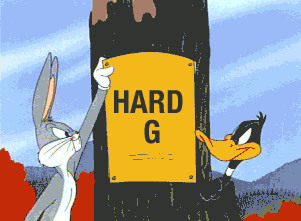
A survey asked over 1,000 Americans whether they pronounce GIF with a hard g or a soft g. The majority voted for GIF and not JIF.
How should a brand use GIFs?

In this example, Converse teamed up with actress Millie Bobby Brown from Stranger Things.
The collaboration was less about selling the product, and more about product placement. By appealing to the feelings that younger demos have of going back to school, Converse was able to build a successful on-brand campaign.
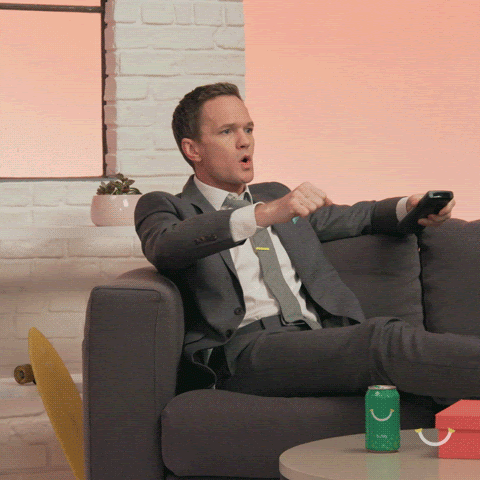 You can subtly incorporate your brand in a reaction GIF.
You can subtly incorporate your brand in a reaction GIF.
Bubly did this, and their GIF now has over 18 million views.
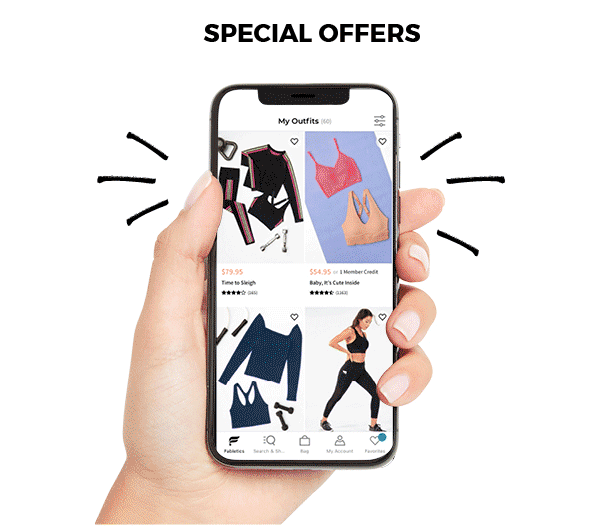
Companies can even spruce up their internal and external emails with GIFs.
Fabletics does this with almost every email sent to their customers.
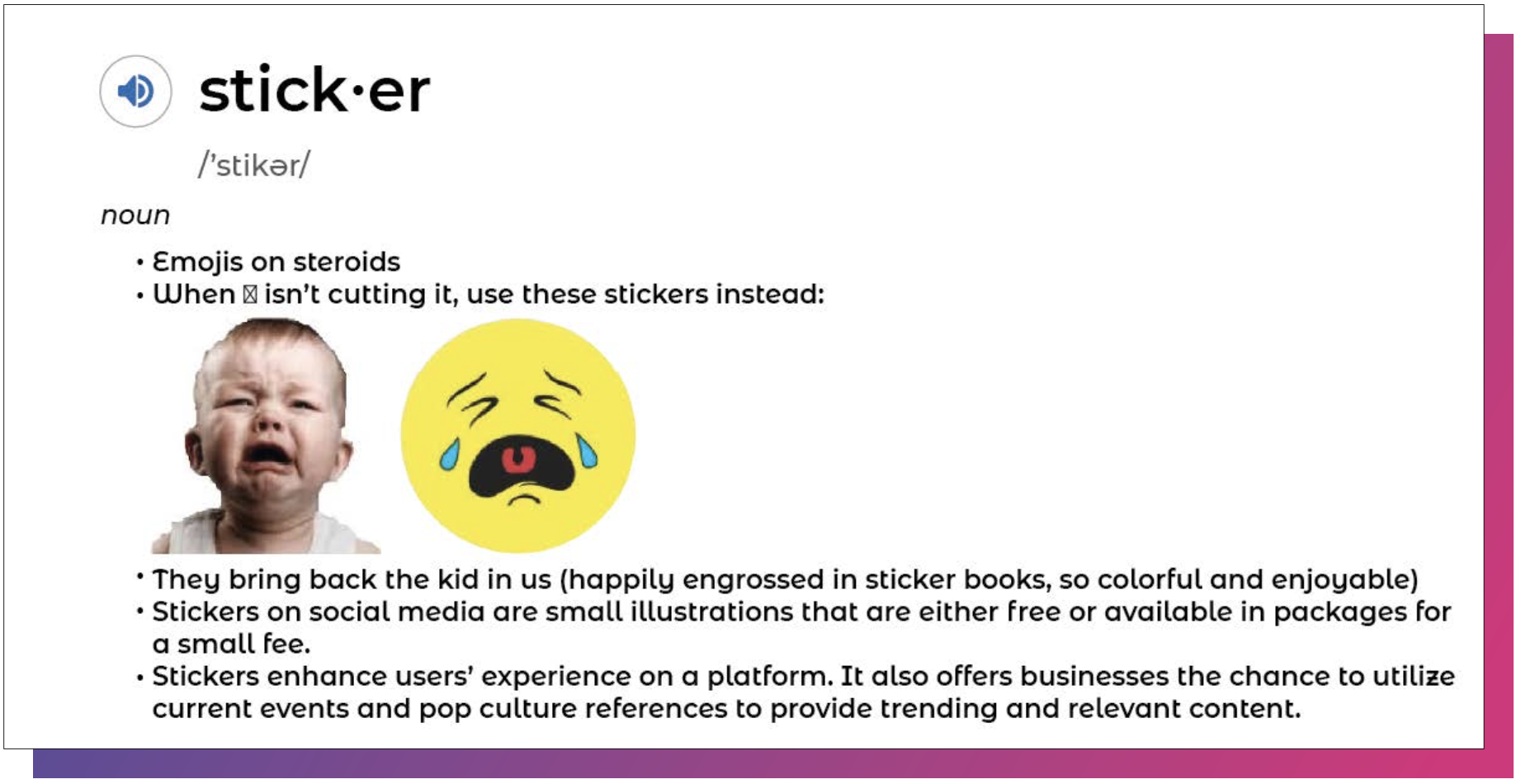
How have brands used stickers?
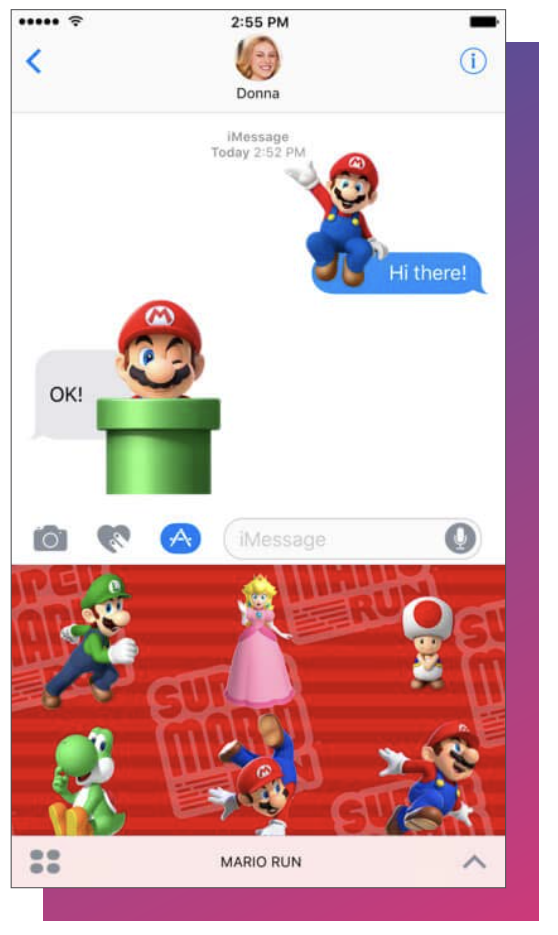
Before releasing the iOS game Super Mario Run, Nintendo put together a sticker pack for iMessage to build up anticipation.
Can you increase engagement with stickers?
These eye-catching elements can help stop thumbs from swiping to the next story.
On Instagram, there are unique features under the stickers option:
-
-
- @Mention, Location, or #Hashtag stickers
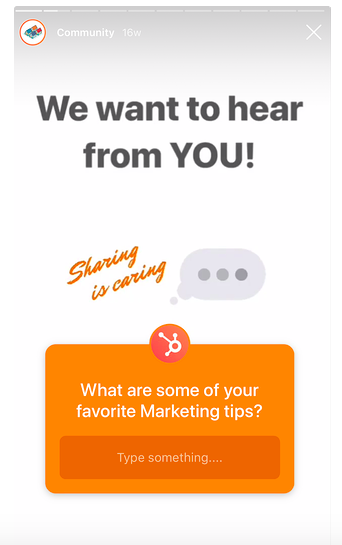
- @Mention, Location, or #Hashtag stickers
-
-
-
- Question Sticker: Ask your audience specific questions to help you get to know them better. (Example: Let us know your thoughts. How do you like ~the product/service~?)
- Music Sticker: Bring a static photo to life with music to instantly create a mood that will connect with viewers.
- Emoji Slider & Polls: Gauge how much consumers like something and use it for marketing purposes… This involvement cultivates a sense of being heard and listened to in the consumer.
-
-
How can stickers be used to help brands & consumers?
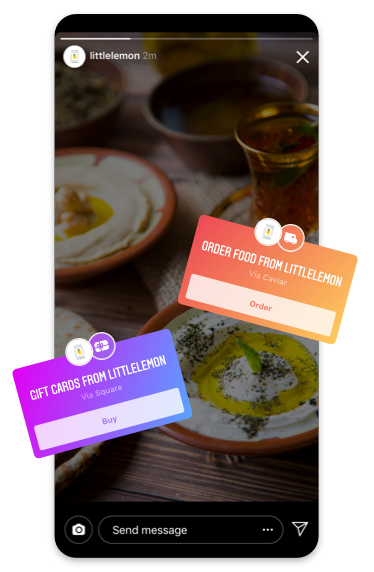
Stickers have become a universal language that we all recognize. For brands, stickers encourage engagement and sales. For consumers, stickers have a history of unifying demographics and building awareness for current movements. It’s a win-win.
During the pandemic, Instagram added several direct call-to-action stickers to support small businesses. The gift card and food order features provided more ways for small businesses to amplify orders online.

Other sticker features during 2020 included the messaging Stay Home and Support Small Business.
Not only is giving back is good for the soul, but it’s also good for business. A Nelson study says that over 70% of millennials will spend more with brands that support worthwhile causes. Even though it’s not new, don’t overlook the donation sticker. Influencers and celebrities have used this tool to support causes they are passionate about. When brands use a donation sticker to bring awareness to their mission or to another cause, they are humanizing their brand and increasing brand loyalty.
Overall: Emotions influence actions.
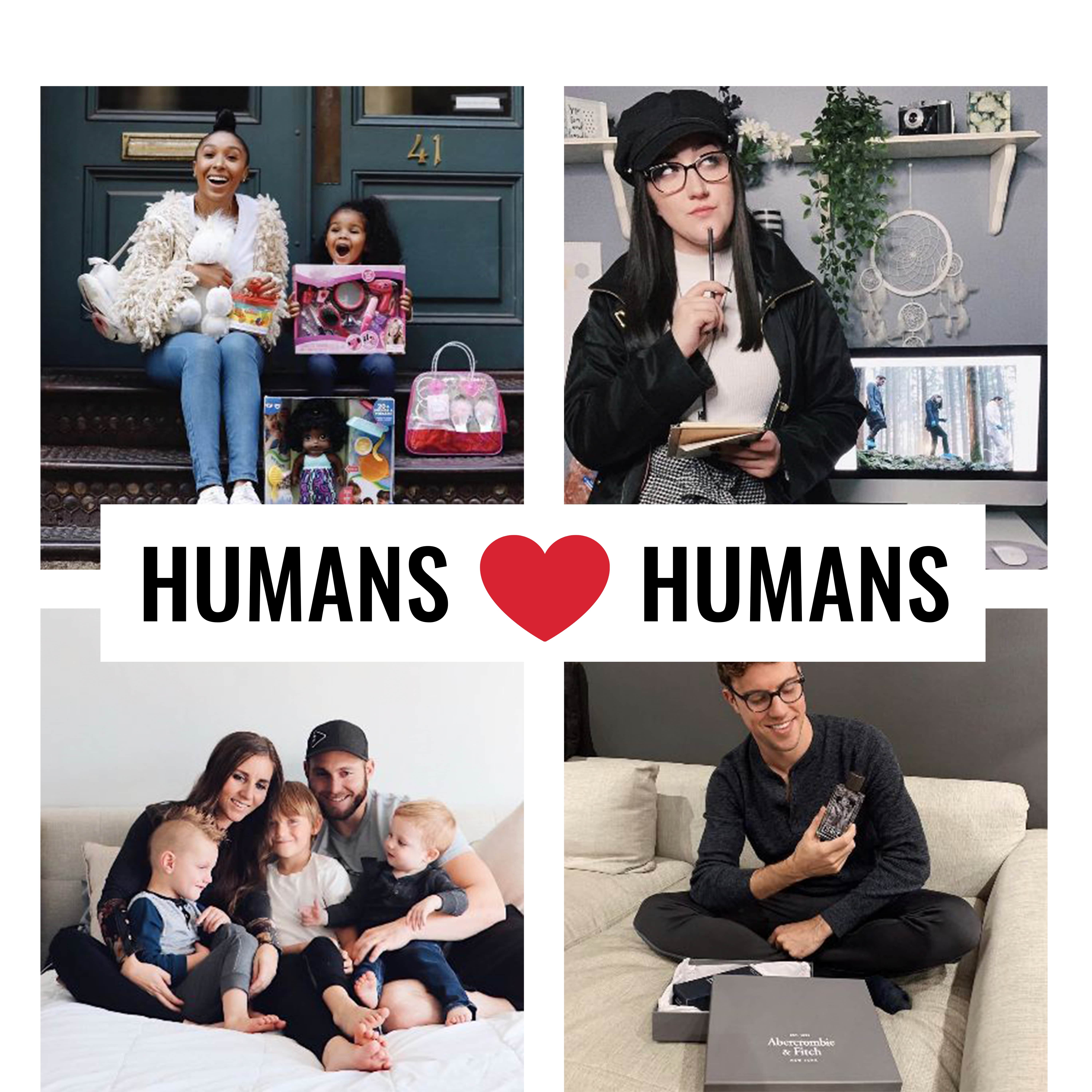
Emojis, Memes, GIFs, and stickers are saturated with human emotions. Even though it seems simple, that doesn’t mean you should just immediately start using them. It’s not that clear-cut.
One minor misunderstanding of what a meme or emoji means could result in a PR crisis for your brand. #canceled
Our influencer marketing agency is full of creative thinkers, social media gurus, and people-centric leaders. We help brands create alongside extraordinary human beings.

